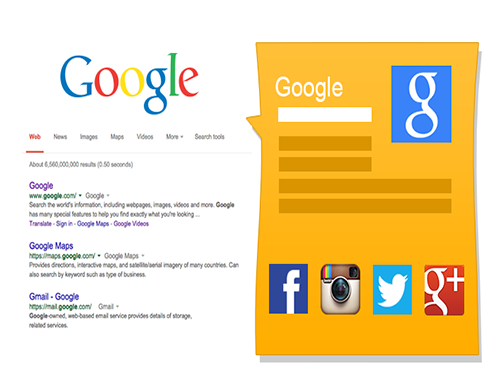Search EnginesBillions of websites, images and other content make up the World Wide Web. Without search engines I am not so sure the World Wide Web would be as effective as it is today. Were you aware that over 90% of consumers worldwide use search engines to access websites and approximately 75% of those users will never even try and see what is on the second results page? It’s true. Thanks to search engines we can access useful information at the touch of a button and find out anything we need to know within seconds of thinking it. Without search engines the World Wide Web would be a dark smoothie of floating websites and juicy blogs all placed in a space with no real order or purpose. In this blog post we explain the different types of search engine available to us and the benefits of each. What is a Search Engine? A search engine is a piece of software made up of ‘crawlers’ or ‘bots’ designed to scan the World Wide Web at incredible speeds whilst simultaneously collecting data from thousands of sites every second. The bots/crawlers follow links, check URL’s, assess the positioning of words, images, repetition and the number of links pointing to a page. When you enter your ‘search term’ into a search engine such as Google or Bing the search engine displays the most relevant results in a list, otherwise referred to as a Search Engine Results Page (SERP’s). The term Search Engine is a general term for this type of software, most often used to descried Bing, Google and Yahoo. How Does a Search Engine Work? Search engines use complex computer algorithms to work out why one result, or Web page, should rank higher than another. These algorithms are top trade secrets and every search engine company claims their algorithm will yield more relevant searches than the competition. There are 3 Main Types of Search Engine: Crawler-Based Search Engine Human-Powered Directories Meta Search Engine 1. Crawler-Based Search Engine (Google, Bing, Yahoo) Crawler based search engines are extremely efficient at sourcing specific relevant information from the billions of published websites on the Internet and respond by displaying all the results found in order of relevancy and SEO ranking. The most well-known crawler is called “Googlebot.” Crawler-Based in 3 Easy Steps: Web Crawling – Otherwise known as Bots or Spiders, these are put in place to collect data, process and build lists (indexing). When a spider follows a URL and visits a site it will read everything it finds. The Bots will repeat the whole process on a regular basis to look for changes to process and index. Indexing – Everything that the Crawler finds is automatically collated, copied and indexed in real time. The purpose of indexing is to validate and prepare all the information collected for extraction; at a later date by the search engine software. Search engine software – This is the part that really matters to the user. When a query is entered by the user the software will use complex ranking algorithms to sort through the billions of pages recorded in the index, it will rank the results in the SERP in order of what it calculates to be the most relevant and presents the results in way that the end user can customise. 2. Human-Powered Directories (Ask Jeeves, ODP, LookSmart) Human-powered directories are operated by humans categorising authorised websites and placing them within a specific category. The editors check the website and rank it based on a pre-defined set of rules. As a rule of thumb a webmaster for a site submits a short description to the directory, humans will then manually categorise the site and list it, they will not rank, promote or optimize sites for search engines. Human powered directories are compiled by humans and for humans. As a result general standards are higher because they can guide and help you narrow your search and refine your results. “Directories DO NOT accept automated submissions and have special means to protect themselves from auto-submission software. You should always submit manually to a directory.” The most popular of these directories is DMOZ.org commonly known as the Open Directory Project (ODP). It is the most wide-ranging human edited directory of the Web; compiled and edited by a vast global community of ‘net-citizens’ and is 100% free. Other examples of human powered directories include LookSmart and AskJeeves. 3. What is a Meta search engine? A Meta search engine enables the user to search multiple crawler-based search engines such as Google and Yahoo at the same time. After the Meta search engine processes the results from various crawler-based search engines and removes duplicate results; it refines the list according to your search. The Meta search engine then proceeds to display the results on one page for a full user-friendly experience. How does a Meta search work? A Meta search engine is otherwise known as a ‘Metacrawler’ and is renowned for being a nifty tool able to single-handedly search several databases at once for a desired topic. The results are then formatted, ranked and presented to the end user. Meta search engines do not maintain or build their own indexes; they take advantage of indexes built by others and combine them into one large list of results. The main feature of Meta search engines is the ability to save time when using multiple search engines to source information. Popular metasearch engines include Dogpile and Excite. I think it is fair to say that Google is the most user-friendly and most well known search engine worldwide. In February 2016 Google passed Apple as ‘the most valuable company in the World’ and continue to rise in the name of the Internet. We understand the importance of getting you to the top of Google Search pages and, more importantly, we know how to keep you there. Speak to one of our experts here at SMEmedia.co.uk the local internet marketing agency for more information.
|




